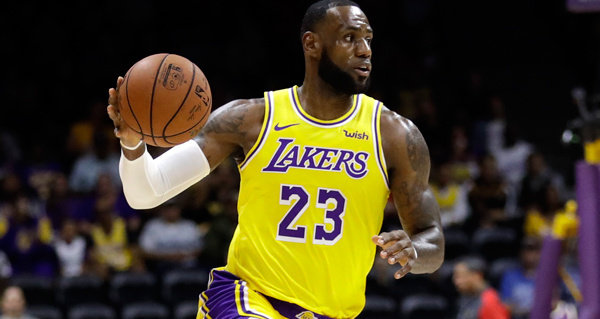The final night of the ESPN docu-series "The Last Dance," a saga about Michael Jordan and the Chicago Bulls of the 1990s, scored better traditional TV rating numbers than any of the games (so far) in the NBA’s experimental new “bubble” season. There are some obvious reasons for this, reached through simple deduction.
One is that, unlike in the bubble season, the docuseries’ significance was a fixed and predictable quality. Many of the pre-playoff bubble games were of little or no importance, in keeping with the standard relevance of the NBA’s dogged late regular season fare. Starters were benched, consequences were absent, and a notable disengagement defined the action. While there were a handful of thrilling, do-or-die contests featuring teams on the fringes of the playoff bracket, the portent of these games was extremely liquid and difficult for any but the most hardcore fan to track. This is always how it is at the end of the bloated 82-game schedule, a course of play that sees relatively unbroken patterns in the standings emerge about 30 games in.
Another obvious reason for the discrepancy in attention between live contemporary basketball and hagiographically summarized basketball from 20 years ago is a simple matter of scheduling. The monocultural comfort of something that shows up on your TV at the same time every week, particularly on a night as typically slow as Sunday—the NFL’s day, uncoincidentally—is a proven steroid for viewer numbers. Half of the NBA’s bubble games have occurred as unprecedented daytime television; this is close to the polar opposite of a regularized Sunday television event. The only way it could be further from that dependable normalcy would be if the games were occurring at dawn. Even the most obsessive basketball fans are dizzy trying to get a grip on the new broadcast schedule.
Beyond these objective measurements, though, lies cultural speculation. While some have suggested that the proliferation of social justice phrases and persistent contextualization of the games within a history of racial struggles in America has hampered attention, there’s nothing too concrete about such claims. There is, in fact, some counter-evidence: In 2012, the Miami Heat put on a rather breathtaking display of solidarity with murdered teenager Trayvon Martin by all posing together, heads hung, in hooded sweatshirts—a not so subtle nod to the clothing Martin was unfairly perceived as suspicious for wearing, just before his death. That year, the Heat made the Finals, LeBron James won his first title, and the ratings were excellent.
Fans either didn’t notice the Heat’s unmistakably political stance earlier in the season, or, more likely, care. The same is likely true about the sport’s current rhetoric—so anodyne and non-specific about its politics, in most cases, that it can hardly even be called political. The approved phrases on the backs of jerseys are not exactly calling for the abolition of police departments, reparations for descendants of slaves, Medicare for All, or prison reform. Instead they are a series of vagueries; generally positive stances that don’t clearly correspond with policy proposals or a revolutionary ethic. They are closer to the kitschy, smiling fare of a folksy suburban interior design shop than anything like a leftist manifesto. Anyone offended by the hazily wholesome stuff on these jerseys is, most assuredly, looking to be offended.
But since the act of looking for things to be offended by is the defining ideological quality of many well-off Americans, it’s not surprising that right-wing columnists and broadcasters have gotten themselves into various pretzels about the NBA’s tepid messaging concessions. A new ecosystem of dogwhistling has cropped up in the pandemic-specific context of live-culture scarcity, and it’s likely to grow in the months that the sport’s postseason proceeds. As per usual, this synthesis of bogeymen is a distraction from more material political concerns, and a tacit confession, on the part of those making the bogeymen, of a certain fragility. The NBA is a big-money product, and as such it hasn’t said or done anything controversial enough to alienate any reasonable potential viewers.
A different strain of cultural speculation would have it that the NBA’s attention problem—pretty clearly, in large part, a current result of the aforementioned logistical issues, though still a real issue on average—is in the department of myth-making. Jordan’s years were more attended to because his was the ultimately Greek career; epic, timeless, seemingly written by scribes jamming the maximum of poetry into every crevice of the storyline. This was even manifest in the music: John Tesh’s NBA on NBC theme song (“Roundball Rock”) transports back to a feeling of pride of bombast that the sport’s broadcasts no longer seem to bother with. As the league’s culture has evolved into one that favors a language that’s half-meme-talk and half-financial-analysis, perhaps its gatekeepers should consider the appeals it once made to the millions who tuned in to watch the old stuff, but can’t bother with the new. A product with its tail between its legs, professional basketball no longer presents itself with its old infectious arrogance and flair. There is a crisis of storytelling in the NBA, but few seem close to diagnosing it.



